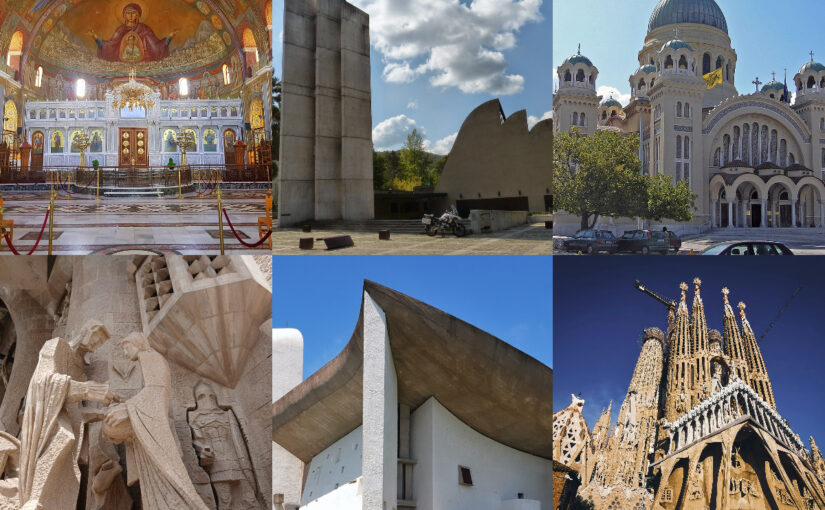Across the sunlit Mediterranean, church architecture tells a story of daring reinvention. Nothing remains static amid the region’s waves of artistic and technological evolution, from the echoes of ancient domes to the angular abstractions gracing skylines today. As the nineteenth century unfolded, historicism swept through southern Europe, resuscitating bygone styles in dazzling hybrids. Brick and marble gave way to concrete and glass. Familiar basilicas shared streets with streaks of cubist geometry and biomorphic curves, ushering in new spiritual possibilities for bustling cities and quiet villages alike.
Architectural Roots and Evolution
The 19th century saw a turn toward revivalism, marked by churches clad in Neo-Byzantine mosaics, Neo-Gothic spires, and other eclectic flourishes. Architects sought inspiration in the distant past, hoping to anchor the present in a sense of continuity and nostalgia. Public taste favored impressive recreations of old forms, and cities from Istanbul to Athens filled with domes, arches, and campaniles reminiscent of earlier epochs.
As time pressed forward, however, the Mediterranean became a laboratory for radical innovation. First came Art Nouveau and Modernisme, particularly in Catalonia, where artists imagined sacred spaces infused with vitality. The movement championed expressive, nature-inspired ornamentation and sinuous, organic shapes. Visionaries like Antoni Gaudí transformed church design into something deeply personal, fluid, and wholly original.
By the mid-20th century, tradition no longer constrained the avant-garde. Modernist architects like Le Corbusier shredded historical convention and embraced abstraction, sculpting sanctuaries from concrete and glass. Minimalism began its march, stripping away excess to reveal the unadorned soul of religious architecture. New construction methods, like steel-reinforced concrete and curtain walls, liberated creators from the logic of arches and columns. With each generation, the Mediterranean church reinterpreted its own identity, balancing the sacred and the contemporary.
Spatial Language and Local Identity
Modern and contemporary churches in the Mediterranean employ a rich vocabulary, uniquely suited to their context yet global in aspiration. Material innovation led the charge: reinforced concrete allowed for sweeping curves, massive vaults, and visionary engineering. Architects manipulated natural light, crafting interiors awash in shifting color. At times, sheer planes of glass dissolved boundaries between sanctuary and landscape, asking worshipers to contemplate God’s presence in the world beyond.
Designers explored organic shapes and conceptual abstraction. Biography and local legend shaped facades. Churches in Barcelona channeled Catalonian folklore and vivid mosaics; those nestled in rural Italy echoed the clean lines of olive groves and the warmth of limestone. Cities threaded regional identities into their new foundations, refusing to let global trends override the spirit of place.
Changing liturgy and theology had their effect. The altar migrated toward the congregation. Spaces for meditation and gathering took precedence over hierarchical procession. Modern churches often arranged the nave, choir, and chapels in playful new relationships, each responding to the evolving needs of worship and community.
Icons of Modern Spiritual Space
La Sagrada Família, Barcelona (begun 1882, Modernisme/Art Nouveau)
La Sagrada Família in Barcelona, begun in 1882 and still unfinished, remains the masterpiece of Modernisme and Art Nouveau. Antoni Gaudí conjured a church from the bones of nature, blending Gothic verticality with airy geometries and jewel-like color. Spiraling towers recall mountain peaks, while the nave’s columns rise like living trees. Mosaics catch Mediterranean sunlight, transforming the interior into a forest of stained glass. Gaudí embraced local identity and universal symbolism, marrying tradition and innovation so wholly that Sagrada Família became both a city symbol and a global pilgrimage site.
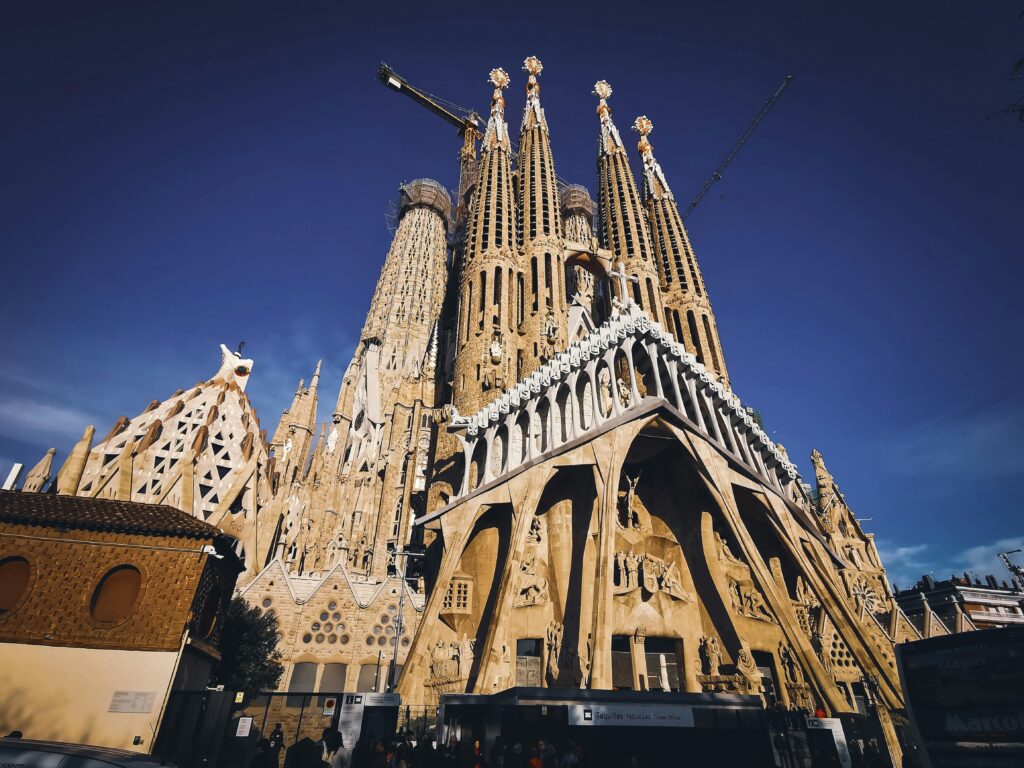
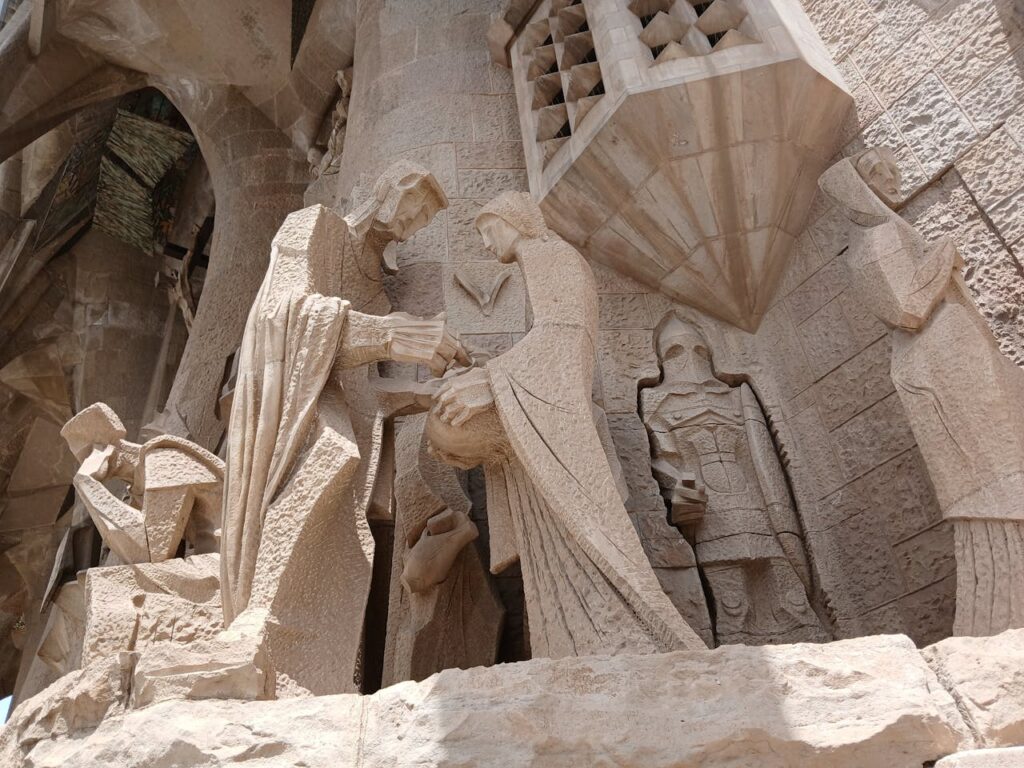
Notre-Dame du Haut, Ronchamp (1955, Modernist—Le Corbusier)
Notre-Dame du Haut in Ronchamp, France, completed in 1955, signals the triumph of Modernism in sacred architecture. Le Corbusier sculpted the church as an abstract, almost primal gesture. Sweeping concrete walls curve and tilt across the landscape. The roof floats delicately over slender columns, while small windows splash colored light across whitewashed interiors. This sanctuary is not an echo of earlier cathedrals; it stands as a bold mediation of earth, sky, and spirit, an invitation to silence and exploration.
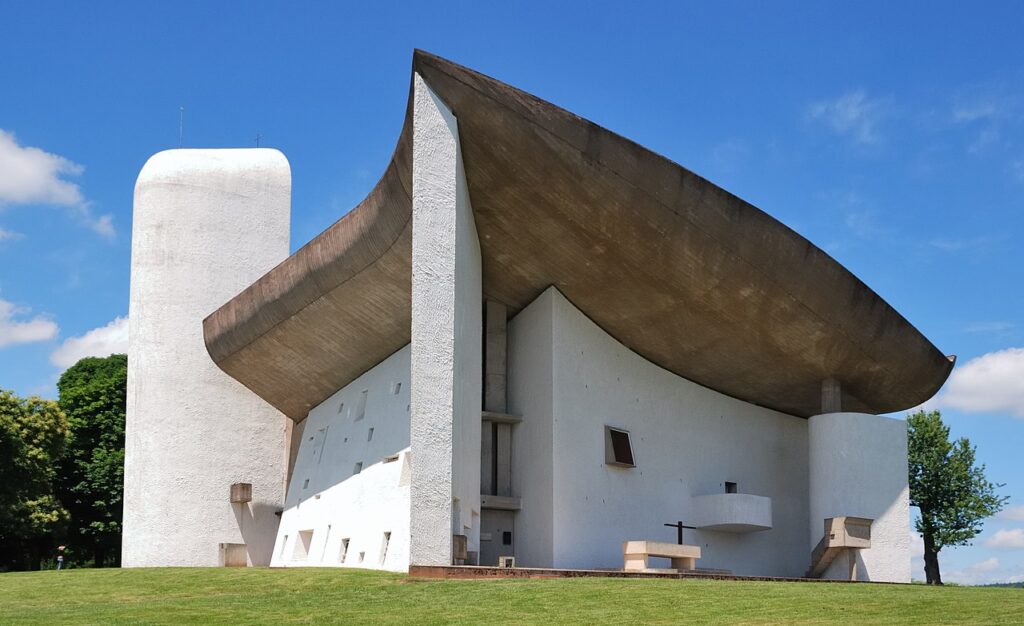
Greek Orthodox Cathedral of Saint Andrew, Patras
The Cathedral of Saint Andrew in Patras rises triumphantly over the city, a beacon of Orthodox faith and one of the greatest modern ecclesiastical landmarks in the Balkans. Completed in 1974 after decades of interrupted construction, this neo-Byzantine masterpiece surprises visitors with its immense central dome, adorned by a gold-plated cross, and surrounded by twelve smaller domes that honor the apostles. Inside, vibrant Byzantine mosaics, towering marble pillars, and gilded icons envelop worshipers in an atmosphere both luminous and reverent. The cathedral can hold over 7,000 people, and it houses sacred relics, including the supposed head of the Apostle Andrew, making it a pilgrimage site as well as a powerful symbol of Patras’ enduring spiritual and cultural vitality.
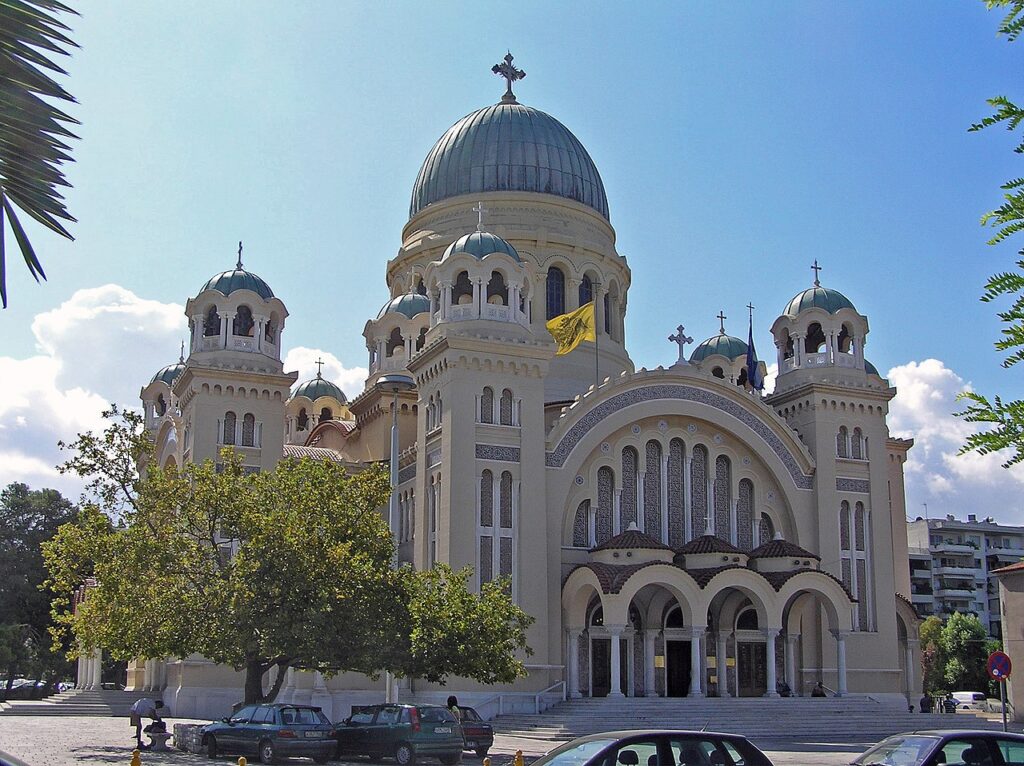
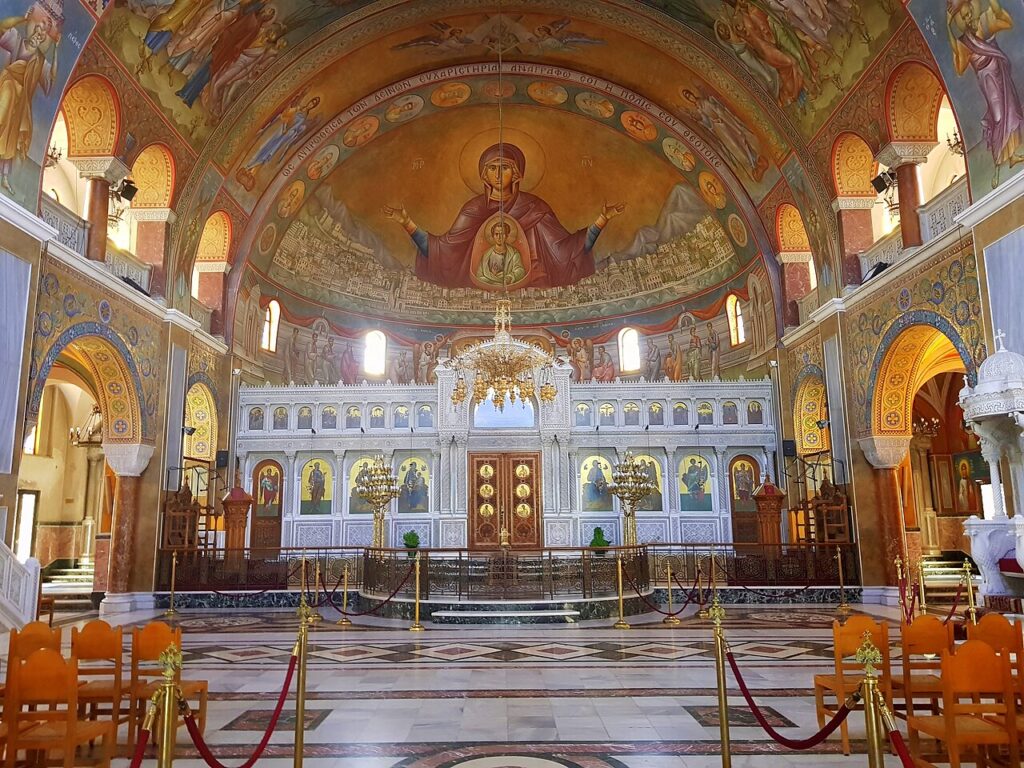
Church of Santa Maria Assunta in Riola di Vergato, Italy
Designed by Finnish architect Alvar Aalto in 1978, this church exemplifies minimalist design with a Mediterranean sensibility. Its clean, geometric lines and use of white concrete create a stark yet serene aesthetic, while the incorporation of natural light through carefully placed windows evokes the luminous quality of Mediterranean architecture. The church’s simple, curved forms and open interior spaces reflect a modern interpretation of sacred space, blending harmoniously with the surrounding Emilia-Romagna landscape. Like the Santuario della Madonna delle Lacrime, it embraces a modern, sculptural form, and like the Valleacerón Chapel, it prioritizes simplicity and integration with its environment.
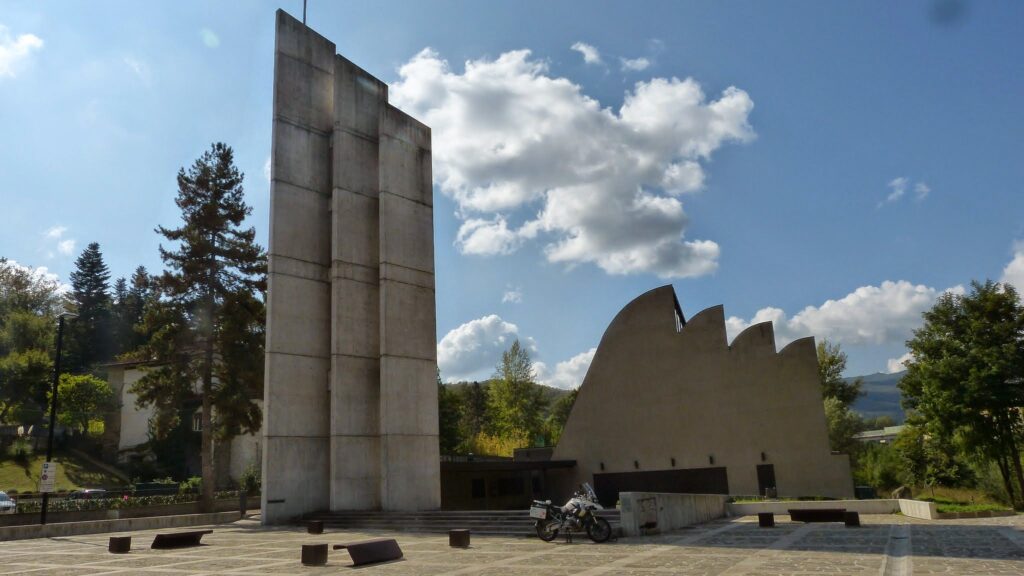
Art, Culture, and Community
Each of these churches shapes and responds to the spiritual and cultural landscapes of the Mediterranean. Modern and contemporary sanctuaries reflect urban dynamism, changing demographics, and shifting religious sensibilities. Museums, concert halls, and gathering spaces blur into sacred programs, their architecture offering contemplation and conversation in equal measure.
Material invention becomes an expression of faith. Liturgical change finds architectural resonance. Artistic risk elevates new forms, forging spaces that challenge and inspire. The sacred no longer hides in history; it participates in the pulse of the city, the movement of people, and the energy of the present.
Living Heritage and Enduring Allure
Modern Mediterranean churches are bridges between past and future. Their walls harbor centuries-old symbols, but their shapes, colors, and ambitions speak to the world in fresh language. Pilgrims, travelers, and locals alike find inspiration beneath their roofs. Many come seeking tradition, only to discover innovation. These creations stand as living testaments to the restless imagination that has always defined the region.
Before your next journey through southern Europe, make time to encounter these modern masterpieces. To sit beneath Gaudí’s vaults or pause in the luminous quiet of Ronchamp is to experience the evolving mystery of the Mediterranean soul: timeless, daring, and boundlessly renewed.
References and Further Reading
- Neo-Byzantine architecture: https://en.wikipedia.org/wiki/Neo-Byzantine_architecture
- The Roots of Modernist Church Architecture: https://adoremus.org/1997/10/the-roots-of-modernist-church-architecture/
- Top 15 Examples of Byzantine Revival Architecture: https://architectureofcities.com/byzantine-revival
- The Europeanization of Athenian Architecture from the late 19th century to 1930: https://www.academia.edu/71935745/The_Europeanization_of_Athenian_Architecture_from_the_late_19th_century_to_1930
Begin the journey anew, and let Mediterranean churches, old and recent, invite wonder, contemplation, and lasting inspiration.
If our work has inspired you, helped you grow, or simply brought a little warmth to your day, consider supporting Thalysia.com with a small donation. Your contribution helps us continue exploring ancient landscapes, documenting local traditions, and celebrating the art of living well.
